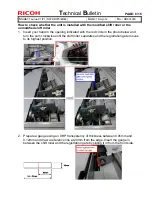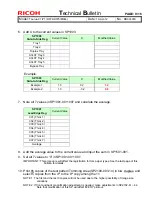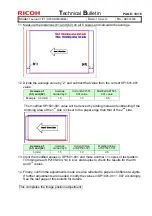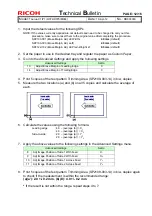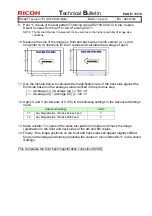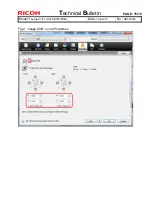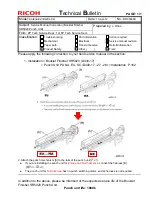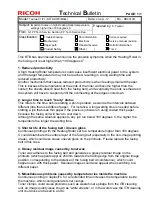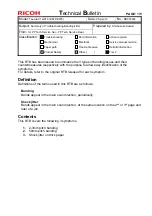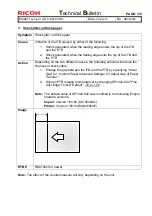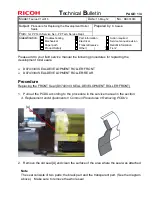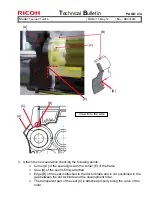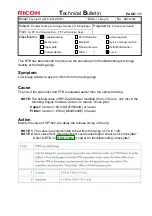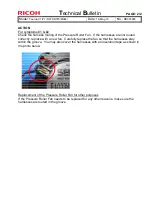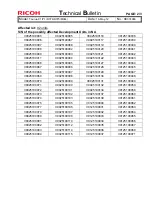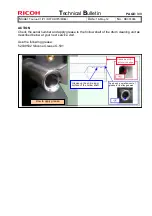
T
echnical
B
ulletin
PAGE: 1/1
Model:
Taurus-C1/P1 (D074/D075/M044)
Date:
20-Apr.-12
No.:
RD074061
Subject:
Important notes on high Heating Roller temperature
settings higher than
180 degrees C
Prepared by:
K. Tsutsui
From:
1st PP Tech Service Section, PP Tech Service Dep.
Classification:
Troubleshooting
Mechanical
Paper path
Part information
Electrical
Transmit/receive
Action required
Service manual revision
Retrofit information
Product Safety
Other (
)
Tier 2
This RTB has been issued to announce the possible symptoms when the Heating Roller in
the fusing unit is set higher than “180 degrees C”.
1. Reduced productivity
A high Heating Roller temperature could cause insufficient electrical power to the system
and the target temperature may not be reached, resulting in a long waiting time and
reduced productivity.
Another mechanism that causes reduced productivity is when feeding small width paper.
This is because the temperature at the ends of the roller will become higher than the
center (the sheets absorb heat from the fusing belt), and eventually the ends overheat and
the system will have to suspend until the overheating at the edges cools down.
2. Longer time to reach "ready" status
This refers to the time before starting a print operation, as well as the intervals between
different jobs that use different paper. For instance, a long waiting time is needed before
starting a job that uses thin paper if the previous job was run using coated thick paper,
because the fusing unit will have to cool down.
Although the same situation applies to any job run below 180 degrees C, the higher the
temperature the longer the waiting time.
3. Shorter life of the fusing belt / Uneven gloss
Continuous printing with the Heating Roller set to a temperature higher than 180 degrees
C could delaminate the surface layer of the fusing belt (especially in the non-image printing
areas), which could also cause uneven gloss on the printouts. Please replace the fusing
belt in this case.
4. Glossy residual image caused by toner wax
Toner wax adheres to the fusing belt and generates a glossy residual image on the
printouts (which appears approx 250mm towards the trailing edge from the original image
position, corresponding to the distance of the fusing belt circumference), which could
happen even with thick paper. Residual images could also appear when switching to a
different paper.
5. Miscellaneous problems caused by temperature rise inside the machine
Continuous printing in duplex/FC for an extended time increases the temperature inside
the machine, which could generate toner clumps.
Toner clumps could cause problems such as waste toner spillage from the ITB cleaning
unit, an image quality issue known as “white streaks”, or in the worst case the ITB cleaning
unit could lock and result in an SC.



